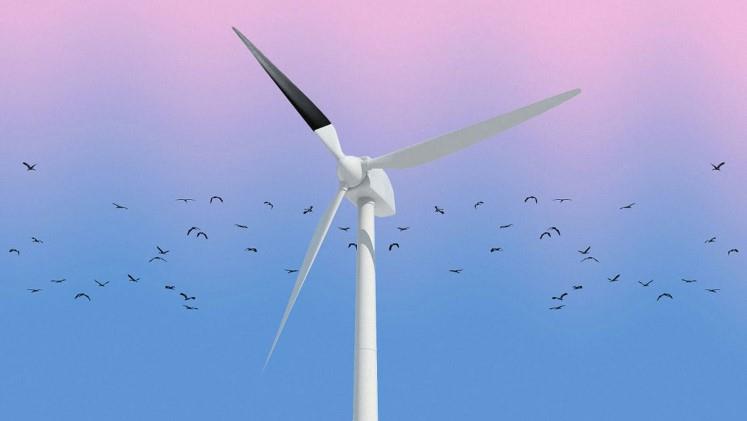
A new study in the Netherlands backed by energy developer Vattenfall aims to further investigate whether painting wind turbine blades black can help reduce bird fatalities.
It follows a Vattenfall-backed study on the island of Smøla in Norway, published in 2020, which suggested that painting one blade from each turbine could reduce the number of bird collisions by 70%.
Seven wind turbines at an RWE-operated wind farm in Eemshaven will now have one blade painted black. Backed by Vattenfall and a number of energy companies, as well as the local authorities in Groningen province, the study has begun already and is expected to run until the end of 2024.
Vattenfall said this year will see baseline measurements taken at the site. Next year the blades will be painted and left for two years, with turbines monitored to see whether this has an impact on the number of bird collisions.
Vattenfall environmental expert Jesper Kyed Larsen explained why the scheme may work: “[It] has to do with the way birds perceive the moving rotor of a wind turbine. When a bird comes close to the rotating blades, the three individual blades can ‘merge’ into a smear and birds may no longer perceive it an object to avoid.
“One black blade interrupts the pattern, making the blending of the blades into a single image less likely.”
The study will also consider the impact of the painted blades on humans and the landscape. While white blades may blend or blur with the surroundings, black blades may create more of a visual distraction for nearby residents.
In addition, researchers will examine aviation safety elements, as well as if the paint has any long-lasting effects on the durability or maintenance schedule for the blades themselves.
Studies have already been run in Denmark and Norway, but the Dutch programme will help evaluate whether the findings are consistent in different meteorological conditions and with different bird species.
Notably, the original study – co-authored by Roel May and researchers at the Norwegian Institute for Nature Research – found that painting the blades had a major effect on raptor fatalities, in this case reducing white-tailed eagle fatalities at the site to zero during the study period.
The study said: “The painting experiment had most effect for raptors. This may well be explained by the higher visual acuity of (especially larger) raptors enabling sharp sight at larger distances.”
It also found that while the resources needed to paint blades while the site was operational may be prohibitive, painting them prior to installation would minimise costs.
Asked whether it supported measures such as these, an RSPB Scotland spokesperson said: “We welcome further research which adds to our understanding of mitigation that could be used to reduce the risk to birds.
“However, first and foremost windfarms must be located in the right places, with suitable sites identified that allow renewable energy development to work alongside nature.”
It comes as environmental groups have cautioned as to the impact of schemes such as the ScotWind offshore leasing round, which could see 25 GW of new offshore wind capacity rolled out across seabird habitats.
In January RSPB Scotland’s head of policy and advocacy Aedan Smith warned that: “The offshore wind projects already consented in Scotland are predicted to kill hundreds of seabirds like kittiwakes, gannets and puffins every year. The potential projects announced [under ScotWind] would be many times bigger than those existing projects and would greatly increase those impacts.”